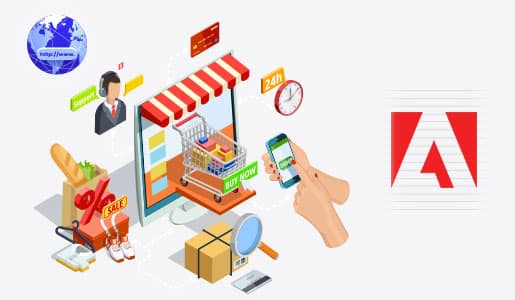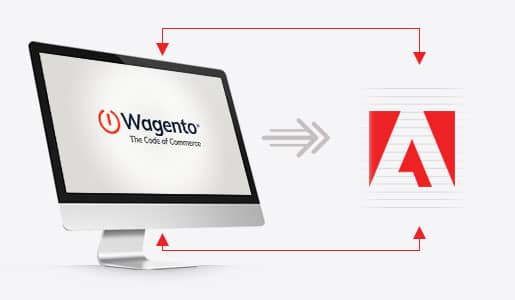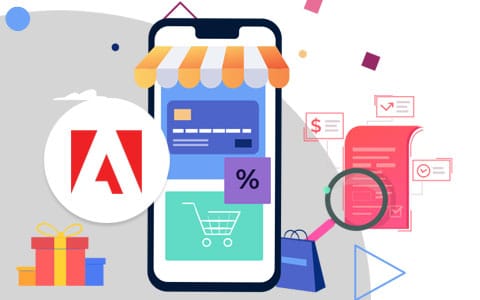
eCommerce, once a novelty, has now been firmly established as a behemoth — one that not only continues to grow but also reshapes how we buy and sell everything from groceries to furniture and experiences. Yet, amidst the excitement and potential for growth, there looms a critical factor that can make or break the journey – the cost of building and maintaining an Adobe Commerce online store. In the world of eCommerce, particularly when developing a store using Adobe Commerce, where every pixel and feature can affect customer experiences, cost considerations tend to take center stage. The challenge, thus, lies not in simply creating a visually appealing and user-friendly Adobe Commerce store but also in adhering to budgets that align with business goals.
Launching an online store then, especially on a platform such as Adobe Commerce, a globally renowned eCommerce solution, can seem like a humongous undertaking. The good news is, with careful planning and a keen understanding of the available solutions, it is possible to build a practical and budget-friendly Adobe Commerce store that stands out.
Adobe Commerce is renowned for its robust features and versatility; but even with a powerful platform at hand, managing costs becomes a decisive factor in ensuring long-term tenability as well as sustainability. In this blog, then, I will offer you a closer look at Adobe Commerce’s pricing structure as well as explore the challenges inherent in estimating costs, thus equipping you with the insights you need to navigate the path to a budget-friendly eCommerce store.
From License Fees to Hidden Costs: A Comprehensive Breakdown of Adobe Commerce Expenses
Magento Open Source

The Adobe Commerce journey starts with Magento Open Source: a solution for businesses that are budget-conscious but developer-savvy. As the name suggests, this tier is entirely free to download and use, delivering essential features to help you develop and maintain a robust online presence. Its suite of functionalities includes:
- Product Management
- Customer Accounts
- Order Processing
- Content Management
Now, about the costs: while the initial price tag of “free” is undoubtedly attractive, the true cost of operating an Open-Source store extends beyond just the software. Here is a list of the key factors that can influence the overall expenditure associated with using Magento Open Source:
- Hosting: Open Source needs a self-hosted server, for which monthly fees tend to range depending on your traffic, security needs, and desired performance.
- Development: If you plan to customize the platform and integrate third-party extensions, you will need developer expertise, i.e. incurring costs.
- Maintenance: To keep your store secure, updated, and running smoothly demands ongoing efforts and that can be handled either in-house or by managed service providers.
Adobe Commerce

The next option on the list is Adobe Commerce, which is available in two sub-versions, namely, Pro and Managed Services. This offering is meant for businesses that need advanced features, scalability, and high levels of support as they seek to deliver a dynamic and powerful online retail experience for their customers. Its list of features includes:
- High-Performance Cloud Infrastructure: Pro operates on a secure, scalable cloud platform that is engineered to deal with high traffic volumes.
- Plethora of In-Built Features: It also gets enhanced marketing tools, advanced merchandising options, and seamlessly integrated B2B capabilities.
- Security and Compliance: In this regard, Adobe Commerce comes equipped with 24/7 monitoring, DDoS protection, and built-in PCI compliance measures among others.
- Expert Support: Adobe offers access to its professional support team, which translates into prompt assistance.
Time to talk about the price tag, then; unlike Open Source, Adobe Commerce requires a yearly subscription, starting at $22,000. The base price is offered to businesses with a Gross Merchandise Value (GMV) under $1 million and increases based on the client’s GMV and Average Order Value (AOV).
Factors That Affect Adobe Commerce Costs:
- GMV and AOV
- Customization Needs
- Third-Party Integrations
- Traffic and Data Storage
Adobe Commerce Cloud
The final offering in Adobe Commerce arsenal is Adobe Commerce Cloud which is aimed at businesses operating at high volumes and need maximum customization and scalability. Think of this one as an enterprise-grade solution in the context of eCommerce platforms. Its list of primary and most sought-after features includes:
- Scalability: Underpinned by an infrastructure designed for peak performance and elasticity, it affords eCommerce stores the ability to handle millions of monthly visitors.
- Extensive Customization: Tailor every aspect of your online store, from user interface to backend processes, ensuring a unique and optimized shopping experience for your customers.
- Integrated Marketing Cloud: Adobe Commerce Cloud also enables seamless integration of eCommerce with marketing automation and personalization tools.
- Global Reach: Expand your market presence with multi-language and multi-currency support, making your store accessible and appealing to a global audience.
- Dedicated Account Management: Receive personalized support and strategic guidance from a dedicated team, ensuring your store operates smoothly and evolves with your business needs.
For those looking to use Adobe Commerce Cloud, you will have to reach out to the company that will, then, offer a custom cost quote based on your individual business needs and requirements. Nonetheless, this one will cost more than Adobe Commerce Pro and Managed Services.
Factors That Affect Adobe Commerce Cloud Costs:
- Transaction Volume and Size
- Customization and Development
- Integrations and Third-Party Services
- Infrastructure Requirements
Challenges in Estimating Adobe Commerce Costs
Now that we have discussed different Adobe Commerce cost tiers, it also becomes apparent that estimating expenses is not as straightforward a task as one would hope. What I mean to say is that it is important for businesses seeking strategic planning to also be aware of the challenges inherent in this process. Let us, then, delve into these factors that make predicting Adobe Commerce costs a unique undertaking.
Development Costs

Unlike what some may claim, the fact remains that Adobe Commerce pricing is dynamic, influenced by your business’ unique requirements. The fundamental development costs can also increase significantly based on the levels of customization; i.e. a basic store might be more affordable than a complex multi-vendor marketplace. One must remember that while such flexibility means tailored solutions, it also necessitates careful consideration to align budgets and expenses with the scale and intricacy of the store.
Extensions and Plugins
Additional features are the next factor that can quickly escalate costs — often through third-party extensions and such. While some extensions are complimentary, others entail a price tag. The choice to enhance your store’s functionalities should be based on a judicious balance between enhancing user experience and the costs associated with premium extensions.
Hosting and Maintenance

The choice of hosting as well as the frequency of updates also wield influence over Adobe Commerce pricing. Opting for cloud hosting, for instance, may result in higher costs as compared to that of shared hosting. It is, then, of vital importance to ensure alignment between your hosting strategy, the scalability, and performance needs of your eCommerce platform.
Training and Support

If your team does not have any experience with Adobe Commerce, training expenses may accumulate too. Oh, and let us not forget that ongoing support also comes with its own associated costs. Hence, make sure to account for training investments and consider the long-term support landscape to ensure seamless integration and efficient operations.
While the factors discussed above are the primary ones that play a role in deciding Adobe Commerce costs, it is essential to also remember that the pricing can change based on market trends, software updates, and even global economic factors. Thus, navigating the nuances of estimating these costs requires a thoughtful approach, considering customization, extensions, hosting choices, and team training. As the eCommerce landscape evolves, seeking professional assistance, such as from the experts over at Wagento, becomes a practical choice, ensuring that your investment aligns seamlessly with your business goals.
















